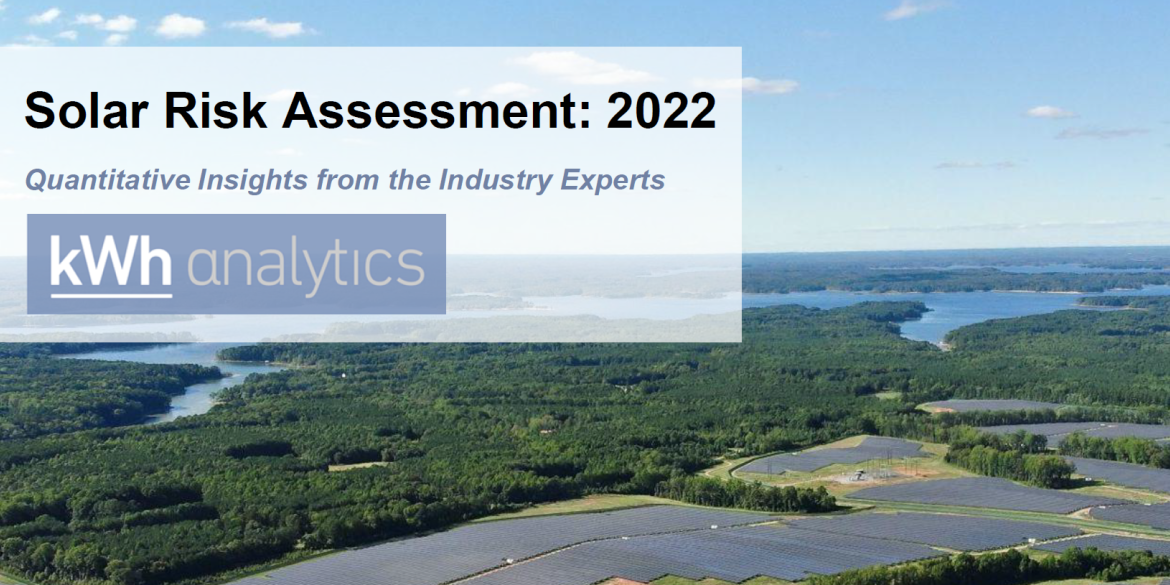Although 2021 marked the third year in a row that solar represented the largest share of new generation capacity in the U.S., continued supply chain constraints, tariff investigations and inflation all pose uncertainty for 2022 project development pipelines. In this fourth edition of the Solar Risk Assessment report, kWh Analytics continues its tradition of bringing together industry leaders to collaborate, and leverage data and science to move the solar industry forward.
This year’s report includes articles from kWh Analytics, Wood Mackenzie, BloombergNEF, Clean Power Research and more, and focuses on three key risk areas:
- Financial pressures due to increased capital expenditures that are forcing equity owners and lenders to scrutinize their assumptions and protect their interest.
- Underperformance of solar projects due to significant overestimation of production in relation to system degradation, inverter availability and PV modeling assumptions.
- Increased frequency and severity of extreme weather events that impact the solar industry’s ability to finance, insure and maintain solar assets.
Understanding extreme weather risks with high-quality solar resource data
This year, Clean Power Research’s contribution to the Solar Risk Assessment report presented new research on the impact of wildfire smoke on PV yield. The number of days in which wildfire smoke impacted solar production doubled in 2020 and 2021 compared to 2017 and 2018. Smoke and aerosols from wildfires block sunlight and cause PV soiling, reducing PV plant yields. Using SolarAnywhere® Data, we calculated that California’s solar potential was down 17% in September 2020 relative to the long-term average for the month, with resulting losses estimated at 27 kWh/kWDC.
For stakeholders that need to forecast solar yield and asset value, observations from recent years provide new information on the risks to solar projects. First, some locations will be more impacted by smoke than others. Intuitively, proximity to wildfire fuel increases risk. But in addition, it’s been observed that smoke traps itself in valleys by blocking sunlight and air circulation, creating a self-reinforcing temperature inversion. The effect is apparent in the California Central Valley, the Columbia River Basin, the Po valley in Northern Italy and the Sichuan Basin in China, for example.
The study of wildfire impacts shows the power of SolarAnywhere to quantify the weather-related risks affecting solar assets globally. Investing in high-quality data is key to quantifying and managing the financial volatility of extreme weather and project underperformance. With SolarAnywhere, investors, project developers, asset managers and offtakers have the solar data and intelligence needed to better control risk throughout a solar project’s lifetime.
